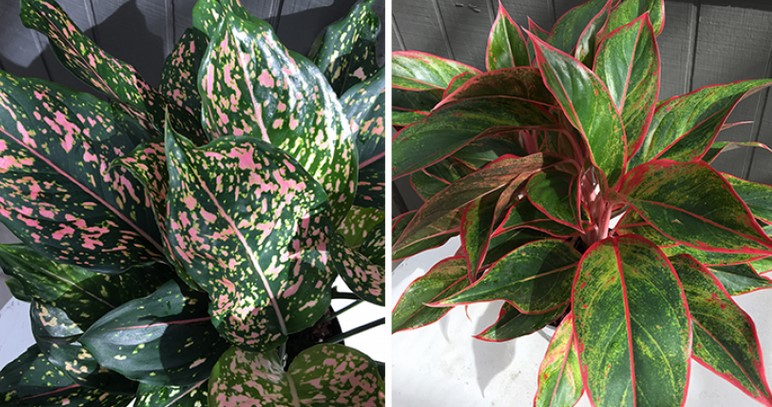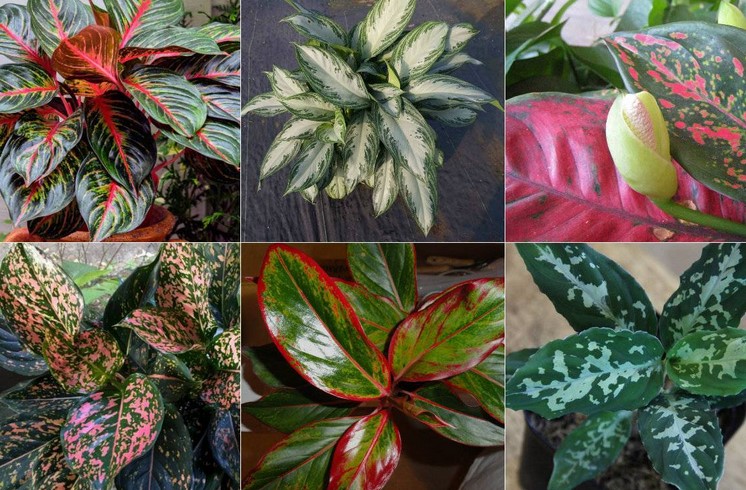If you are considering growing aglaonema in your home, there are several varieties available. These varieties have beautiful leaves and are cold-tolerant. They are also very easy to care for. They have a range of different care requirements, but they can thrive in many different rooms. The Missouri Botanical Garden recommends keeping indoor temperatures 60degF or lower.
Aglaonema Varieties are quite possibly one of the most popular indoor plants due to their fantastic looks, easy care requirements and diversity. Perfect plants for beginners which is why they are loved by everyone from houseplant enthusiasts to beginners. This article covers 23 beautiful Aglaonema varieties to showcase the wonderful options available to you.

Chinese Evergreens
The Aglaonema genus is native to Asia and New Guinea. It is widely used as a plant for home decor. They are hardy and grow well in low light conditions. They can also survive in artificial light. They tend to grow slowly and don’t always produce flowers or fruit.
The Chinese evergreen grows well in standard peat-based potting soil. It does not require too much water, but does benefit from drainage additives. It can be potted in a variety of containers, ranging from simple ceramic pots to ceramic or clay.
Potting them in a container can encourage denser foliage. Occasionally, they may require repotting. Infestations with scales, mealybugs, and aphids can cause problems with the plant.
There are hundreds of different Chinese Evergreen plant varieties. Fortunately, many are relatively easy to care for. There are some common names and some not-so-common ones. The Aglaonema pictum tricolor is the most well -known and striking among them. It is available in a wide variety of colors and can be as tall as 4 feet tall and as wide as 3 feet.
Their beautiful leaves
Aglaonema varieties are known for the beautiful color and pattern of their leaves. Depending on the variety, they may be dark green or silvery. The leaves of aglaonema are arranged in rosettes. Generally, these plants prefer shade to bright light. However, the more colorful varieties may require more light. In low light conditions, the leaves will begin to lose their vibrant colors. Medium light levels should restore their vibrant colors.
Care for aglaonema plants is very important. The best way to ensure that they maintain their beautiful leaves is to provide consistent watering. Depending on the variety, the leaves can become leggy over time. To remedy this issue, cut off the leggy parts of the plant and replant in soil or water. However, consistent care is essential to avoid pest problems. Pests are more likely to attack plants that are stressed. Spider mites, mealy bugs, and scale are common pests that can infest aglaonema plants.
Aglaonema Maria has leaves that blend jungle green with pale grayish green in a chevron pattern. Maria Christina has leaves that are mostly silvery with deep green edges.
Their cold-tolerant nature
Aglaonema is native to tropical forest floors in Asia and prefers indirect light. It will scorch its leaves in direct sunlight, so it is best to place it in a location with diffused light. Some cultivars are tolerant of lower light levels and can even be grown under fluorescent lighting. Aglaonema has many different colors and patterns of foliage. Maria is one variety with a forest-like speckled pattern.
Aglaonemas prefer room temperatures around 70 degrees, but temperatures below 50 degF can be too cold for them. The temperature of the soil should remain between 65 and 80 degrees throughout the year. If the soil is damp and not well drained, Aglaonema plants may suffer. To ensure their success, it is best to aerate the soil before watering them.
Humidity is very important to Aglaonema plants. Their native habitat is tropical, so they require high humidity levels. If you have a humidifier, it would help to mist the plant several times a day. The humidity should remain between 60 and 70 percent.
Their ease of care
Aglaonema varieties’ ease of maintenance depends on their size and the type of soil they grow in. The amount of water needed per plant will depend on its size and the climate. It is important not to overwater the plants because this can cause root rot. It is also important to keep the soil moist and never completely dry. Aglaonemas require the right humidity to grow well.
The Aglaonema white rain is a good houseplant variety. The foliage is green, but can be streaked with pink. It is slow-growing and bushy. It also tolerates low light and well-draining soil. The flowers look pinkish in color, but the actual color is green and the pattern is undefined.
The aglaonema variety Silver Queen has lance-shaped leaves with silver green patterns. It is easy to care for, and needs average light levels and adequate watering. During the growing season, it benefits from the addition of slow-release fertilizer.
All of these plants are grown well by hobbyists, so if you don’t see something that grabs your attention, it’s probably because there are no good options for that variety. Luckily for you, there is a wide selection of Aglaonema varieties out there and something to suit everyone’s tastes no matter what you’re looking for in a houseplant.

